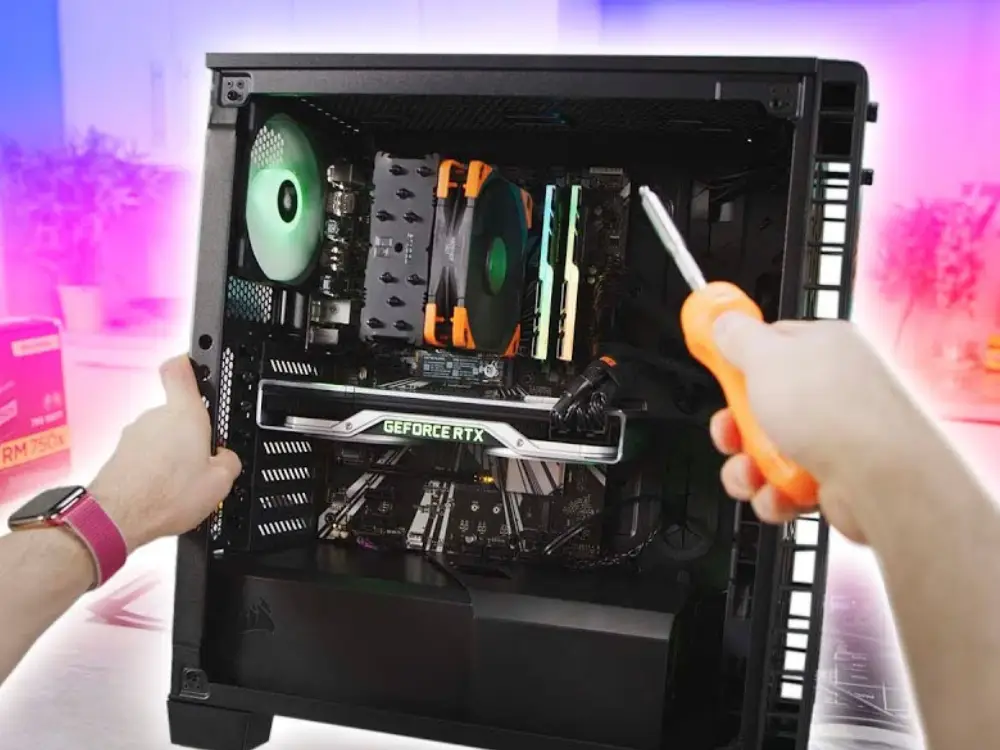Hi PC geeks and builders! 🌟
Are you new to assembling a desktop PD? Would you like to know exactly (just out of curiosity) what’s inside a computer?
Here we are ready to give you all the information! Let’s start from the basics whether you need to build a gaming PC or a reliable and long-lasting work PC
1. The case: the elegant home of your PC
First, you’ll need a case. Think of this as your PC’s home. It holds all the components together and is available in various sizes such as ATX, Micro-ATX and Mini-ITX. Choose one that suits your style and has good airflow to keep everything cool.
2. Motherboard: The backbone of your PC
The motherboard is the central hub to which all other components connect. Determine the type of CPU, RAM and other parts you can use. Look for one with the right socket for your processor and enough slots for future upgrades. It’s like the backbone of your PC, keeping everything connected and communicating.
3. CPU: the brain of your PC
The central processing unit (CPU) is the brain of your computer, which handles all calculations and instructions. Brands like Intel and AMD offer a range of processors to suit different needs and budgets. Choose one that meets your performance requirements, whether it’s for gaming, video editing, or general use.
4. GPU: the graphics power
If you like gaming or graphics-intensive activities, a graphics processing unit (GPU) is essential. Renders images, animations and videos. NVIDIA and AMD are the big players here. Some CPUs come with integrated graphics, but for serious gaming or design work, a dedicated GPU is the way to go.
5. RAM: short-term memory
Random access memory (RAM) is where your computer stores data that it is actively using. More RAM means better multitasking and faster performance. Aim for at least 8GB for general use, but 16GB or more is ideal for games and heavy applications.
6. Storage: Your Digital Warehouse (HDD)
You’ll need a place to store your operating system, applications, and files. Choose between:
HDD (hard disk drive): more convenient, with lots of storage space.
SSD (Solid State Drive): Faster and more reliable, although typically more expensive.
For the best of both worlds, consider using an SSD for your operating system and programs and an HDD for storing large files.
7. Power Supply Unit (PSU): The energy supplier
The power supply powers all your components. It’s crucial to choose one with enough power to support your system, with a little extra headroom for future upgrades. A good power supply ensures stable and reliable power delivery.
8. Cooling system: keep it cool
To prevent components from overheating, you will need a cooling system. This can include:
Case fans: essential for airflow.
CPU heatsink: can be air or liquid cooled. Liquid cooling is quieter and more efficient but also more complex.
GPU Coolers: Often built into the graphics card but can be upgraded.
9. Peripherals: the extra touches
Don’t forget the peripherals that complete your setup:
Monitor: Choose one with the resolution and refresh rate that suits your needs.
Keyboard and mouse: choose comfortable and responsive ones for your work or gaming.
Speakers or headphones: for an exceptional audio experience.
10. Operating System:
The Software Foundation
Once you’ve set up your hardware, you’ll need an operating system. Windows, macOS (if you’re building a Hackintosh), or Linux are popular choices. Install your operating system, update your drivers, and you’re ready to go!
Grab your components, follow a guide or two, and have fun! What’s the first thing you’ll do with your new PC? Game, code or maybe watch your favorite shows in high resolution? The possibilities are endless! 🚀💻
